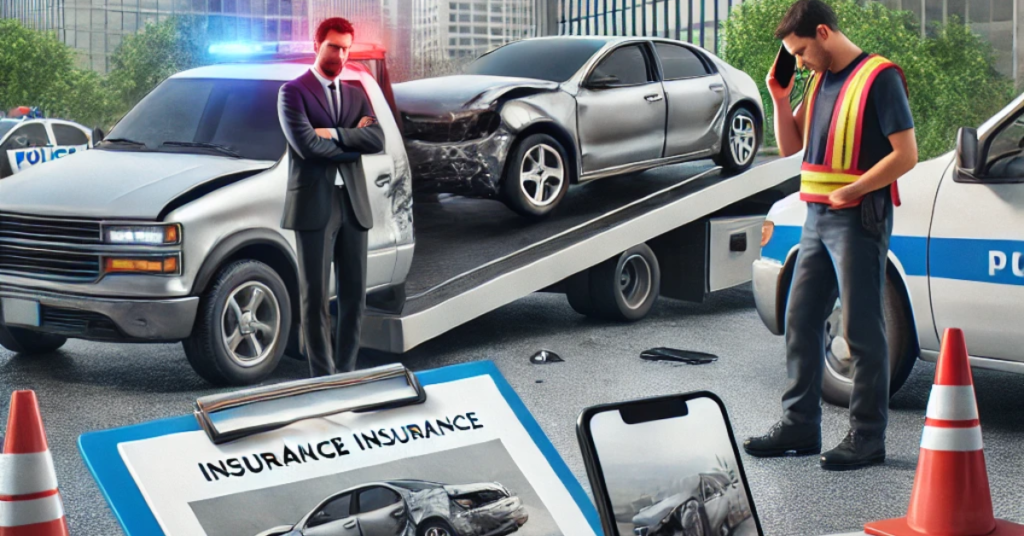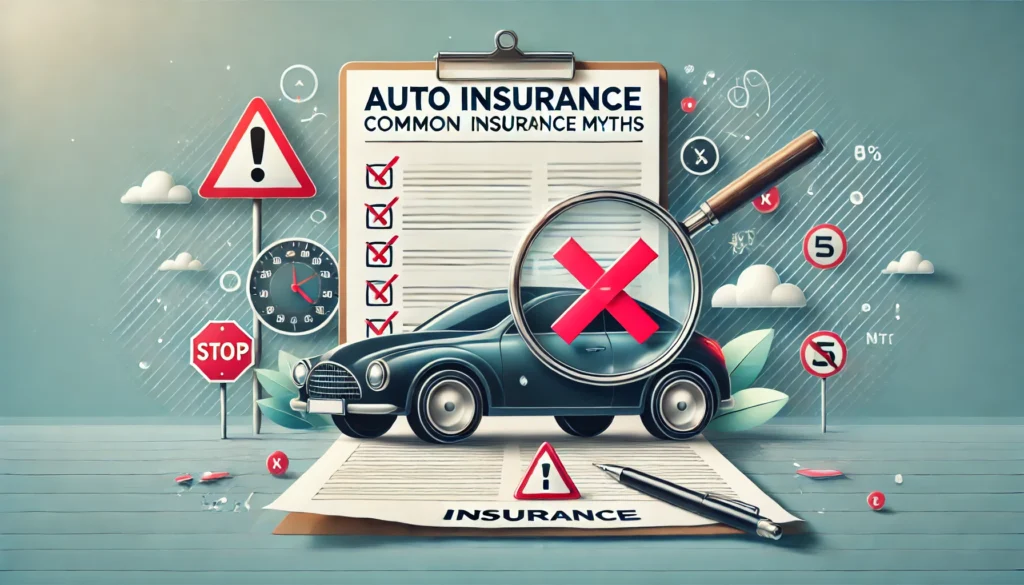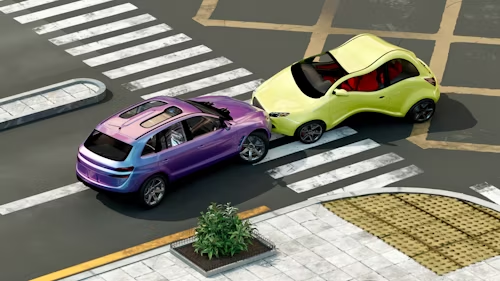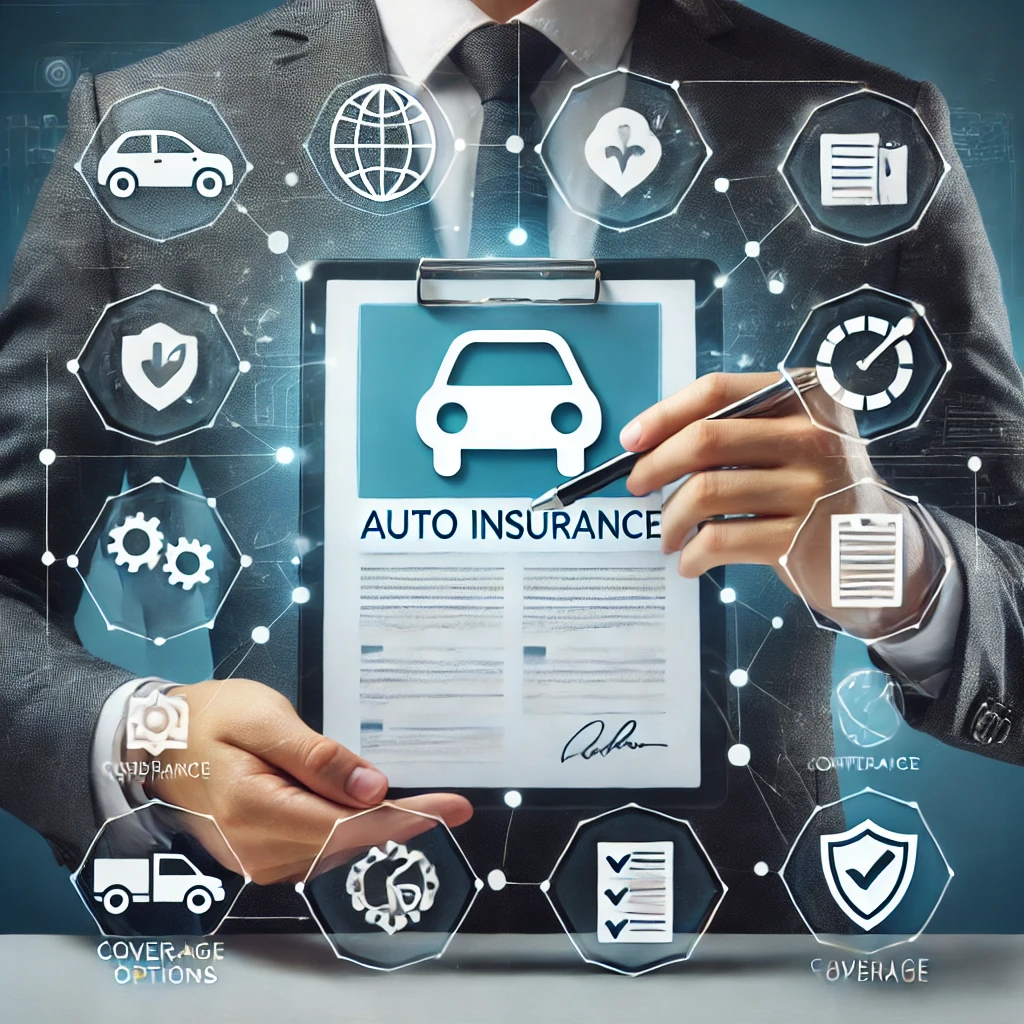How to File an Auto Insurance Claim: A Step-by-Step Guide Getting into a car accident or dealing with vehicle damage can be stressful, but knowing how to file an auto insurance claim properly can make the process smoother. Whether it’s a minor fender bender or a major accident, following the right steps ensures you receive the compensation you deserve. In this guide, we’ll walk you through the step-by-step process of filing an auto insurance claim. Table of Contents Step 1: Ensure Safety First Step 2: Gather Important Information Step 3: Notify Your Insurance Company Step 4: Understand Your Coverage Step 5: Get a Damage Assessment Step 6: Coordinate Vehicle Repairs Step 7: Follow Up on Your Claim Step 8: Settle the Claim Bonus Tips to Ensure a Smooth Claim Process Final Thoughts Step 1: Ensure Safety First Your safety and the safety of others should be your top priority. Check yourself and others for injuries. If it’s safe, move your vehicle to a secure location to avoid blocking traffic. Turn on hazard lights to warn other drivers. Call 911 if there are injuries or significant damage. Step 2: Gather Important Information To strengthen your claim, collect the following details: Other Driver’s Information: Full name, contact details, driver’s license number, and insurance provider. Vehicle Details: Make, model, color, and license plate number of all vehicles involved. Accident Location & Time: Note the exact location, time, and weather conditions. Witness Information: Names and contact details of any witnesses. Police Report (If Applicable): If the police arrive, request a copy or at least the report number. Photos & Videos: Take clear pictures and videos of the accident scene, vehicle damages, and any relevant road signs. Step 3: Notify Your Insurance Company Most insurers require prompt reporting of an accident. Contact your provider and provide them with: Your policy number. A detailed description of the accident. Photos and collected information. The police report (if available). Many insurance companies offer mobile apps that allow you to file claims online, making the process quicker. Step 4: Understand Your Coverage Before proceeding with repairs, review your insurance policy to understand: Deductibles: The amount you need to pay before your insurance kicks in. Coverage Limits: Maximum amounts covered for damages and medical expenses. Rental Car Coverage: If your policy covers temporary transportation while your car is being repaired. Step 5: Get a Damage Assessment Your insurer may send an adjuster to assess the damage or request you to visit an authorized repair shop. Ensure you: Provide all accident details accurately. Get a repair estimate from an authorized mechanic. Confirm whether the insurance company directly pays the repair shop or if you’ll be reimbursed. Step 6: Coordinate Vehicle Repairs You can choose the repair shop recommended by your insurer or pick your own. If additional damages are discovered during repairs, inform your insurance adjuster immediately. Keep all receipts and documentation for reimbursement purposes. Step 7: Follow Up on Your Claim Insurance claims can take anywhere from a few days to weeks, depending on the complexity. Stay in touch with your adjuster and ensure all necessary documents are submitted on time. If there are delays, ask for an update and estimated timeline. Step 8: Settle the Claim Once your claim is processed, your insurer will provide: Payment for vehicle repairs or total loss settlement (if applicable). Medical reimbursement (if covered). Compensation for other expenses, such as rental cars. If you disagree with the settlement, you have the right to negotiate or dispute the claim by providing additional evidence. Bonus Tips to Ensure a Smooth Claim Process Report the accident as soon as possible to avoid claim rejection. Always provide honest and accurate information to prevent claim denial. Keep a copy of all documents related to the accident and claim. Understand your policy before an accident happens so you’re not caught off guard. Consider an accident forgiveness policy if you want to prevent premium hikes after a first-time accident. Final Thoughts Filing an auto insurance claim doesn’t have to be overwhelming. By following these steps, you can navigate the process with confidence and ensure you get the compensation you deserve. Always stay prepared by understanding your policy, keeping proper records, and acting promptly after an accident. Need more insurance tips? Stay tuned for more expert advice on managing your policies and maximizing your coverage!
Top 10 Auto Insurance Myths Debunked Auto insurance can be a complex topic, and with so much misinformation floating around, it’s easy to get confused. From the color of your car to the impact of a single ticket, there are plenty of myths that can lead to misunderstandings and poor decisions. In this guide, we’ll debunk the top 10 auto insurance myths, helping you make smarter choices and save money. Table of Contents Myth 1: Red Cars Cost More to Insure Myth 2: Your Credit Score Doesn’t Affect Your Premiums Myth 3: Comprehensive Coverage Covers Everything Myth 4: Collision Coverage is Required by Law Myth 5: Your Insurance Covers You When You Rent a Car Myth 6: Your Premiums Will Skyrocket After One Ticket Myth 7: You Only Need the Minimum Required Coverage Myth 8: Newer Cars Always Cost More to Insure Myth 9: You Can’t Change Your Insurance Company Once You’ve Signed Up Myth 10: All Insurance Companies are the Same Conclusion Myth 1: Red Cars Cost More to Insure One of the most common myths is that red cars cost more to insure. This myth has been around for decades, but it’s simply not true. Insurance companies don’t consider the color of your car when calculating your premiums. Instead, they look at factors like the make, model, year, and safety features of your vehicle. So, if you’ve been holding off on that red sports car because you thought it would cost more to insure, think again! Myth 2: Your Credit Score Doesn’t Affect Your Premiums Your credit score plays a significant role in determining your auto insurance premiums. Insurance companies view a good credit score as an indicator of responsible behavior and financial stability. A higher credit score can lead to lower premiums, while a lower score might result in higher rates. Maintaining a good credit score is not just good for your financial health; it can also save you money on your auto insurance. Myth 3: Comprehensive Coverage Covers Everything Comprehensive coverage is a valuable part of your auto insurance policy, but it doesn’t cover everything. Comprehensive coverage protects your vehicle from non-collision events like theft, vandalism, natural disasters, and animal collisions. However, it doesn’t cover mechanical breakdowns, routine maintenance, or wear and tear. For those issues, you’ll need additional coverage or warranties. Myth 4: Collision Coverage is Required by Law While many states require drivers to have liability coverage to protect others in the event of an accident, collision coverage is not required by law. Collision coverage protects your vehicle from damage caused by collisions with other vehicles or objects. While it’s not mandatory, it’s a good idea to consider adding it to your policy, especially if you have a newer or more valuable car. Myth 5: Your Insurance Covers You When You Rent a Car While many states require drivers to have liability coverage to protect others in the event of an accident, collision coverage is not required by law. Collision coverage protects your vehicle from damage caused by collisions with other vehicles or objects. While it’s not mandatory, it’s a good idea to consider adding it to your policy, especially if you have a newer or more valuable car. Myth 6: Your Premiums Will Skyrocket After One Ticket Getting a traffic ticket can be frustrating, but it doesn’t necessarily mean your insurance premiums will skyrocket. While a ticket can lead to an increase in your rates, the impact varies depending on the severity of the violation and your driving history. A single minor ticket might not have a significant effect, but multiple tickets or serious violations can result in higher premiums. Myth 7: You Only Need the Minimum Required Coverage Choosing the minimum required coverage might seem like a way to save money, but it can leave you financially vulnerable. The minimum coverage required by law typically includes liability coverage, which protects others in the event of an accident. However, it might not be enough to cover all your potential costs, such as medical expenses or damage to your vehicle. Consider your personal circumstances and financial situation when choosing your coverage levels. Myth 8: Newer Cars Always Cost More to Insure While newer cars generally cost more to insure due to their higher value and potential for more expensive repairs, this isn’t always the case. Some newer cars come with advanced safety features that can actually lower your premiums. Additionally, the make and model of the car play a significant role in determining insurance costs. For example, a new economy car might cost less to insure than an older luxury vehicle. Myth 9: You Can’t Change Your Insurance Company Once You’ve Signed Up You can change your insurance company at any time. While there might be some administrative steps involved, such as canceling your current policy and setting up a new one, you’re not locked into a specific company. It’s always a good idea to shop around and compare rates periodically to ensure you’re getting the best deal. Don’t be afraid to switch if you find a better option. Myth 10: All Insurance Companies are the Same Not all insurance companies are created equal. Each company has its own set of policies, coverage options, and pricing models. Some companies specialize in certain types of coverage or offer unique discounts and perks. It’s essential to research and compare different companies to find the one that best meets your needs and offers the best value for your money. Conclusion Navigating the world of auto insurance can be challenging, but debunking these common myths can help you make smarter decisions. Remember: Red cars don’t cost more to insure. Your credit score affects your premiums. Comprehensive coverage doesn’t cover everything. Collision coverage isn’t required by law. Your personal insurance might not cover rental cars. One ticket won’t necessarily skyrocket your premiums. The minimum required coverage might not be enough. Newer cars don’t always cost more to insure. You can change your insurance company at any time. Not
Understanding Comprehensive vs. Collision Coverage: What You Need to Know When it comes to auto insurance, understanding the different types of coverage can be as confusing as navigating a maze during rush hour. Two of the most commonly misunderstood coverages are comprehensive and collision. While both protect your vehicle, they serve different purposes and come with their own set of benefits and costs. In this guide, we’ll break down the differences between comprehensive and collision coverage, helping you make an informed decision about what’s best for you. Table of Contents What is Comprehensive Coverage? What is Collision Coverage? Key Differences When to Choose Comprehensive Coverage When to Choose Collision Coverage Cost Considerations Real-Life Scenarios Frequently Asked Questions Conclusion What is Comprehensive Coverage? Comprehensive coverage is an optional type of auto insurance that protects your vehicle from damage caused by events other than collisions. Think of it as a safety net for all the unexpected things that can happen to your car. Here are some of the most common scenarios covered by comprehensive insurance: Theft: If your car is stolen, comprehensive coverage will help cover the cost of replacing it. Vandalism: If someone scratches your car or breaks a window, comprehensive coverage can help repair the damage. Natural Disasters: Comprehensive coverage protects your vehicle from damage caused by events like hurricanes, floods, earthquakes, and hailstorms. Animal Collisions: If you hit a deer or another animal, comprehensive coverage can help cover the repairs. Falling Objects: If a tree branch falls on your car or a rock hits your windshield, comprehensive coverage can help. What is Collision Coverage? Collision coverage is another optional type of auto insurance that protects your vehicle from damage caused by collisions with other vehicles or objects. Unlike comprehensive coverage, collision coverage specifically covers damage resulting from accidents. Here are some common scenarios covered by collision insurance: Car-to-Car Accidents: If you hit another car or are hit by another car, collision coverage can help cover the cost of repairs. Collisions with Objects: If you hit a tree, a fence, or a utility pole, collision coverage can help cover the damage. Rollovers: If your car rolls over, collision coverage can help cover the cost of repairs or replacement. Why You Might Need Collision Coverage Collision coverage is essential if you frequently drive long distances, have a long commute, or live in an area with heavy traffic. It provides financial protection in case you’re involved in an accident, helping to cover the cost of repairs or replacement of your vehicle. Key Differences Coverage Scenarios Comprehensive Coverage: Covers damage from theft, vandalism, natural disasters, animal collisions, and falling objects. Collision Coverage: Covers damage from car-to-car accidents, collisions with objects, and rollovers. Cost Comprehensive Coverage: Generally costs less than collision coverage because it covers a broader range of less frequent events. Collision Coverage: Typically costs more because it covers more frequent and potentially more expensive accidents. Deductibles Comprehensive Coverage: Often has a lower deductible, making it more affordable to use in case of a claim. Collision Coverage: Usually has a higher deductible, which means you’ll pay more out of pocket before the coverage kicks in. When to Choose Comprehensive Coverage You should consider comprehensive coverage if: You live in an area with a high risk of theft, vandalism, or natural disasters. You frequently drive in areas with wildlife. Your car is relatively new or valuable, and you want to protect your investment. You want comprehensive protection for your vehicle beyond what collision coverage provides. When to Choose Collision Coverage You should consider collision coverage if: You frequently drive long distances or have a long commute. You live in an area with heavy traffic or high accident rates. Your car is relatively new or valuable, and you want to protect it from collision damage. You want financial protection in case you’re involved in an accident. Cost Considerations Premiums The cost of comprehensive and collision coverage can vary widely depending on several factors, including your driving history, the type of car you drive, and where you live. Generally, collision coverage is more expensive than comprehensive coverage because it covers more frequent and potentially more costly accidents. Deductibles Both comprehensive and collision coverage come with deductibles, which is the amount you pay out of pocket before the insurance coverage kicks in. Comprehensive coverage often has a lower deductible, making it more affordable to use in case of a claim. Collision coverage typically has a higher deductible, which means you’ll pay more out of pocket before the coverage takes effect. Value of Your Vehicle The value of your vehicle also plays a significant role in determining whether comprehensive and collision coverage are worth it. If your car is older or has a low market value, the cost of the coverage might outweigh the potential benefits. On the other hand, if you have a newer or more valuable car, the protection provided by comprehensive and collision coverage can be well worth the cost. Real-Life Scenarios Scenario 1: Comprehensive Coverage Imagine you live in a neighborhood with a high rate of vandalism. One night, someone breaks your car window and steals your GPS. With comprehensive coverage, you can file a claim to cover the cost of repairing the window and replacing the GPS. Scenario 2: Collision Coverage Suppose you’re driving home from work one evening and hit a deer. The impact causes significant damage to your car. With collision coverage, you can file a claim to cover the cost of repairs. Scenario 3: Both Comprehensive and Collision Coverage Let’s say you’re driving in heavy rain and hydroplane, hitting a tree. The collision causes significant damage to your car. With collision coverage, you can file a claim to cover the repairs. Later that week, a hailstorm damages your car’s roof. With comprehensive coverage, you can file another claim to cover the hail damage. Frequently Asked Questions Do I Need Both Comprehensive and Collision Coverage? Not necessarily. Whether you need both depends on your specific circumstances and risk tolerance. If
The Impact of Autonomous Vehicles on Auto Insurance The rise of autonomous vehicles is not just a futuristic concept anymore—it’s a reality that’s already starting to reshape our roads and, consequently, the auto insurance industry. As we step into 2025, the impact of autonomous vehicles on auto insurance is becoming more pronounced. Let’s dive into how this technological revolution is transforming the way we think about car insurance. The Promise of Safer Roads One of the most significant impacts of autonomous vehicles is the potential for safer roads. According to KPMG, over 90% of accidents are caused by driver error. Autonomous vehicles, equipped with advanced safety features like traffic jam assist, lane departure warnings, and collision avoidance technology, aim to reduce these errors significantly. As more autonomous vehicles hit the roads, we can expect a substantial decrease in accident frequency. What This Means for Insurance Fewer accidents mean fewer claims, which could lead to lower premiums for consumers. However, the transition won’t be immediate. Insurance companies will need to adapt their underwriting models to account for the reduced risk profile of autonomous vehicles. This shift could also lead to a change in the types of coverage needed. For instance, there might be a greater focus on product liability insurance for manufacturers and technology providers. Changes in Insurance Models Personal vs. Commercial Insurance As autonomous vehicles become more prevalent, the mix of insurance products will likely change. KPMG’s research suggests that the personal automobile insurance sector could shrink to less than 40% of its current size within 25 years. This is because commercial and product liability lines will expand as more responsibility shifts from individual drivers to manufacturers and technology firms. New Products and Services Insurance companies are already preparing for this shift. According to a survey by KPMG, 61% of insurers expect to offer new and different personal auto products, while 45% expect to offer new commercial auto products. These new products might include coverage for software updates, cybersecurity threats, and other unique risks associated with autonomous vehicles. The Role of Data and Technology Autonomous vehicles generate vast amounts of data, which can be used to improve risk assessment and claims processing. Insurers can leverage this data to offer more personalized and accurate premiums. For example, AI-driven tools can analyze driving behavior and vehicle conditions to tailor coverage and premiums to individual drivers. Claims Processing The data from autonomous vehicles can also streamline claims processing. AI algorithms can assess vehicle damage more quickly and accurately, leading to faster payouts and better fraud detection. This not only improves customer satisfaction but also reduces operational costs for insurers. Challenges and Considerations Determining Fault One of the biggest challenges with autonomous vehicles is determining fault in the event of an accident. According to KPMG’s survey, 68% of respondents believe the legal system will have the most significant impact on determining fault. This means insurers will need to work closely with legal experts and regulatory bodies to develop new frameworks for liability. Cost of Repairs While accident frequency may decrease, the cost of repairs for autonomous vehicles could increase. These vehicles are equipped with sophisticated technology, and repairing or replacing damaged components can be expensive. Insurers will need to factor this into their pricing models and consider how it affects overall premiums. The Future of Auto Insurance As we look ahead, the auto insurance industry will need to adapt quickly to the changes brought about by autonomous vehicles. This includes: Updating Underwriting Models: To account for the reduced risk profile of autonomous vehicles. Developing New Products: To cover unique risks associated with autonomous technology. Leveraging Data and AI: To improve risk assessment and claims processing. Collaborating with Stakeholders: Including manufacturers, technology firms, and regulatory bodies to develop new frameworks for liability. What Consumers Can Expect For consumers, the future holds the promise of safer roads and potentially lower premiums. However, it’s essential to stay informed about the changes in insurance models and understand the new types of coverage available. As autonomous vehicles become more common, it will be crucial to review your insurance policy regularly to ensure it meets your needs. Conclusion The impact of autonomous vehicles on auto insurance is profound and far-reaching. While the transition to a world with more autonomous vehicles will bring challenges, it also presents significant opportunities for insurers and consumers alike. By embracing technology, adapting to new risks, and collaborating with stakeholders, the auto insurance industry can navigate this transformative period and continue to provide essential protection for drivers. As we step into 2025, the future of auto insurance is exciting and full of possibilities. Stay tuned for more updates and insights as this revolution unfolds.
How to Choose the Right Auto Insurance Policy for Your Needs Choosing the right auto insurance policy can be a daunting task, especially with the myriad of options and terminology involved. However, with the right guidance, you can make an informed decision that not only protects you financially but also gives you peace of mind. In this comprehensive guide, we’ll walk you through the essential steps to select the perfect auto insurance policy for your needs. Table of Contents Understand Your State Requirements Evaluate Your Personal Needs Types of Auto Insurance Coverage Compare Quotes from Multiple Providers Consider Discounts and Bundling Check Company Reputation and Reviews Read the Fine Print General Tips for Saving Conclusion Understand Your State Requirements Before you start shopping for auto insurance, it’s crucial to understand the minimum coverage requirements in your state. Each state has its own set of laws regarding auto insurance, and failing to meet these requirements can result in fines or even license suspension. The most common types of required coverage include: Liability Coverage: This covers damages you cause to others in an accident. It includes bodily injury liability and property damage liability. Uninsured/Underinsured Motorist Coverage: This protects you if you get into an accident with a driver who doesn’t have enough insurance to cover the damages. Personal Injury Protection (PIP) or Medical Payments Coverage: This covers medical expenses for you and your passengers, regardless of who is at fault. Evaluate Your Personal Needs Your personal circumstances play a significant role in determining the right insurance policy for you. Consider the following factors: Your Vehicle: The make, model, and age of your car can impact your insurance rates. Luxury and high-performance cars tend to cost more to insure. Driving Habits: How often and how far you drive can influence your premiums. If you have a long commute or drive frequently, you may need more coverage. Financial Situation: Your ability to afford a higher deductible can help lower your monthly premiums. However, ensure you can cover the deductible if you need to file a claim. Types of Auto Insurance Coverage Liability Coverage Liability coverage is mandatory in most states and covers damages you cause to others. It includes: Bodily Injury Liability: Covers medical expenses, lost wages, and pain and suffering for others injured in an accident you caused. Property Damage Liability: Covers damage to other people’s property, such as vehicles, fences, or buildings. Collision and Comprehensive Coverage Collision Coverage: Pays for damage to your car from collisions with other vehicles or objects. Comprehensive Coverage: Covers damage to your car from non-collision events, such as theft, vandalism, or natural disasters. Additional Coverage Options Uninsured/Underinsured Motorist Coverage: Protects you if you’re in an accident with a driver who doesn’t have enough insurance. Personal Injury Protection (PIP): Covers medical expenses for you and your passengers, regardless of fault. Rental Car Reimbursement: Covers the cost of renting a car while your vehicle is being repaired. Roadside Assistance: Covers towing, jump-starts, and other roadside services. Compare Quotes from Multiple Providers Comparing quotes from multiple providers is essential to ensure you’re getting the best deal. Use online comparison tools or contact multiple insurers directly to get quotes. When comparing quotes, consider: Coverage Limits: Ensure the coverage limits meet your needs and state requirements. Deductibles: Higher deductibles can lower your premiums but increase your out-of-pocket costs if you file a claim. Perks and Discounts: Look for companies that offer discounts for safe driving, multiple policies, or good credit. Consider Discounts and Bundling Many insurers offer discounts for various factors, such as: Safe Driving: Maintaining a clean driving record can lead to significant discounts. Multiple Policies: Bundling your auto insurance with other policies, like home insurance, can save you up to 15%. Student Discounts: Good grades and attending college away from home can qualify students for discounts. Check Company Reputation and Reviews The reputation of the insurance company is crucial. Look for companies with high ratings from independent review agencies and minimal consumer complaints. Websites like NerdWallet provide detailed reviews and comparisons of top insurance providers. Read the Fine Print Before signing up, read the fine print of your policy. Understand the terms and conditions, coverage limits, and any exclusions. Ensure you’re aware of any additional fees or conditions that may apply. General Tips for Saving Paying Annually Paying your premiums annually instead of monthly can save you up to 15%. This avoids the extra fees associated with monthly payments. Increasing Your Deductible Increasing your deductible can lower your monthly premiums. While this means you’ll pay more out of pocket if you need to file a claim, it can help reduce your overall insurance costs. Group Discounts Being part of an approved group, such as a professional association or club, can lead to discounts of up to 10%. Mention any memberships you have to your insurer to see if you qualify for these discounts. Conclusion Choosing the right auto insurance policy involves understanding your state requirements, evaluating your personal needs, comparing quotes from multiple providers, considering discounts and bundling, checking company reputations, and reading the fine print. By following these steps, you can ensure you’re getting the best coverage at the best price. Remember, the goal is not just to save money but to have a policy that provides adequate protection and peace of mind.With these tips and strategies, you’ll be well on your way to making an informed decision about your auto insurance policy in 2025. Happy shopping!




